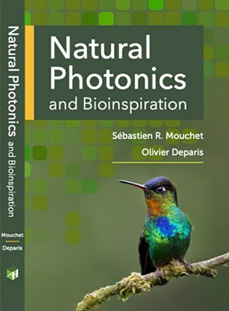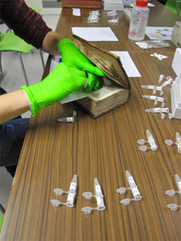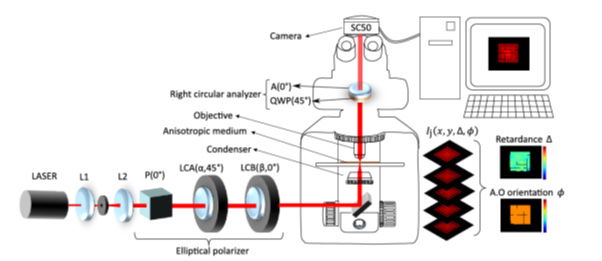Deparis research group
We study the physics of natural photonic structures, in relation with the evolution of some biological functions (e.g. structural colouration) found in plants, terrestrial and marine animal species. Based on these fundamental studies, we develop bio-inspired applications for the fields of novel materials, solar or thermal energy devices. We also develop non-invasive material characterization techniques in the context of cultural heritage, in particular for material studies on parchments and medieval manuscripts.
Photonic structures occurring in biological tissues such as butterfly wings, beetle elytra, or fish scales are responsible for a broad range of optical effects including iridescence, narrow band reflection, large solid-angle scattering, polarization, additive colour mixing, fluid induced colour changes, and controlled fluorescence. For further information about our researches on this topic, and more generally on world-wide researches in natural photonics and bioinspiration, we invite you to read our book published by Artech house in 2021 (ISBN: 9781630817978), or, alternatively, the following outreach review of our research activities published by the press (in French) entitled "A l'Unamur, la nature révèle ses secrets photoniques"

- M. Ladouce et al. “Scattering of ultraviolet light by avian eggshells”, Faraday Discussions 223 (2020), 63-80.
For instance, we currently study the anatomy of limp bindings made of parchment (limp vellum). The corpus consists of limp bindings from 16th c. to17th c., originating from Spanish Low Countries. We have also studied parchment manuscripts and charters of the Orval abbey, Belgium. This study has shed a new light on the work of a Cistercian scriptorium through our findings of correlations between animal species distribution among parchments and their presumed place of production. These two projects benefited from the financial support of the King Baudouin Foundation.

Fig. : Non-destructive sampling of a parchment for animal species identification

- J. Bouhy et al. “Analysis of accuracy and ambiguities in spatial measurements of birefringence in uniaxial anisotropic media”, Applied Optics 61 (2022), 8081-8090.









